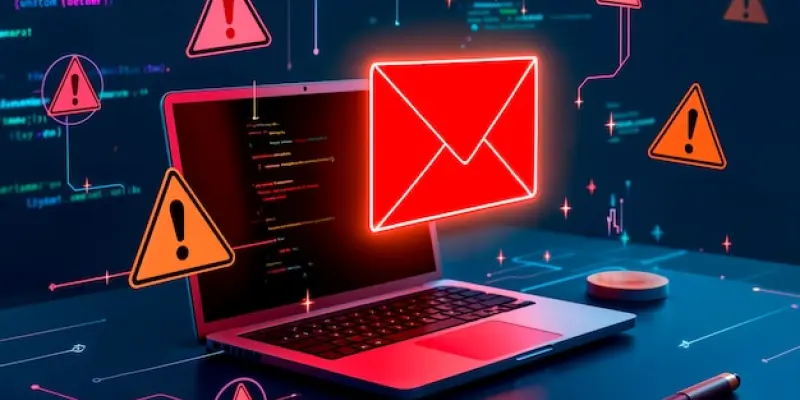Email remains one of the most critical tools for business communication, yet it is also a prime target for cybercriminals who exploit its inherent vulnerabilities. These attacks often include phishing, brand impersonation, and malware distribution, which can severely compromise company data and reputation. As a result, it’s essential for organizations to implement strong email authentication protocols that verify sender legitimacy and protect domains from misuse. These include SPF, DKIM, and DMARC, which form the foundational pillars of modern email security. Together, they create a comprehensive defense mechanism to safeguard emails from spoofing and unauthorized use. A detailed grasp and implementation of these protocols can help ensure that your email infrastructure is secure, trusted, and aligned with best practices.
Implementing SPF For Email Authentication
Sender Policy Framework (SPF) is a widely used protocol that offers a way for domain owners to define which mail servers are authorized to send emails on their behalf. The initial step when implementing SPF involves identifying all legitimate sources of emails for a particular domain. These legitimate sources include the organization’s own mail servers, cloud-based email platforms such as Google Workspace or Microsoft 365, and third-party services like marketing platforms and ticketing systems that send emails on behalf of the domain. Formulating an SPF record requires composing a DNS TXT record that lists these authorized sources, starting with v=spf1 to indicate the version, followed by mechanisms like ip4 for IP addresses, mx to authorize servers in MX records, and include to delegate authority to external services.
A company using Google Workspace along with an on-premise mail server might use an SPF record like v=spf1 mx include:_spf.google.com ip4:203.0.113.5 -all. This record authorizes Google’s mail servers, a specified IP address, and the domain’s MX servers, with the -all mechanism ensuring messages from unauthorized sources are rejected. Once drafted, the SPF record is published as a TXT record in the DNS zone, using DNS query tools or web-based SPF validators to ensure no syntax errors and proper visibility. It’s critical to limit the use of include statements and avoid ptr mechanisms, given SPF’s restriction to 10 DNS lookups. Testing the email delivery from authorized sources and confirming that unauthorized servers are correctly impaired is essential. This rigorous approach ensures only legitimate mail servers can use the domain to send emails, significantly mitigating spoofing risks.
Configuring DKIM For Multiple Senders
DomainKeys Identified Mail (DKIM) offers a cryptographic signature for each outgoing email, allowing recipients to verify the authenticity and unaltered state of the message. Organizations hosting their mail servers, like Postfix, can start DKIM implementation by generating a public-private key pair using tools like OpenDKIM. The opendkim-genkey command generates this key pair specific to the domain. Securely store the private key on the server and publish the public key as a DNS TXT record under a selector like default._domainkey.yourdomain.com. This DKIM DNS record might look like v=DKIM1; k=rsa; p=YourPublicKeyHere. Integrate OpenDKIM with the mail server to ensure outgoing emails are automatically signed as per the configuration file listing domain, selector, and private key path. Performing test emails to validate DKIM signatures confirms the setup.
For third-party email services such as SendGrid, Mailchimp, or Salesforce, DKIM setup is usually handled via the provider’s interface. Within the platform, generate a DKIM selector and public key, then publish the DNS record at a subdomain like sendgrid._domainkey.yourdomain.com. Services might necessitate creating CNAME records instead of TXT records to point to their managed DKIM infrastructure. Once records are published and DNS propagation is confirmed, enable DKIM signing through the provider’s dashboard. Rotating DKIM keys every 6 to 12 months through new key pairs ensures ongoing security and compliance with emerging standards. This practice maintains the robustness of the email infrastructure, particularly given the dynamic nature of cyber threats and evolving standards in email security protocols.
Enforcing Policies With DMARC
Domain-based Message Authentication, Reporting, and Conformance (DMARC) ties the results of SPF and DKIM together, allowing domain owners to dictate how unauthenticated emails are managed by receiving servers. Additionally, DMARC offers comprehensive reporting, enabling organizations to monitor authentication results and detect misuse. To begin implementing DMARC, publish a DNS TXT record at _dmarc.yourdomain.com, including the version (v=DMARC1), policy (p=none, quarantine, or reject), and a reporting address (rua=mailto:dmarc@yourdomain.com). For instance, a policy of v=DMARC1; p=none; rua=mailto:dmarc-reports@yourdomain.com instructs servers to deliver all emails while sending aggregate reports to a specified address.
A gradual approach to policy enforcement is recommended. Start with a p=none policy to gather data without affecting mail flow, and analyze reports over several weeks to identify legitimate senders that might be failing authentication. Once confident in the configuration of valid sources, transition to a quarantine policy to route suspicious emails to recipients’ spam folders. Incrementally increase enforcement by raising the percentage of messages subject to the policy (e.g., pct=25, then pct=100). Ultimately, move to a reject policy to block all unauthenticated emails entirely. Use alignment options like aspf=r (relaxed SPF alignment) or adkim=s (strict DKIM alignment) based on organizational needs.

